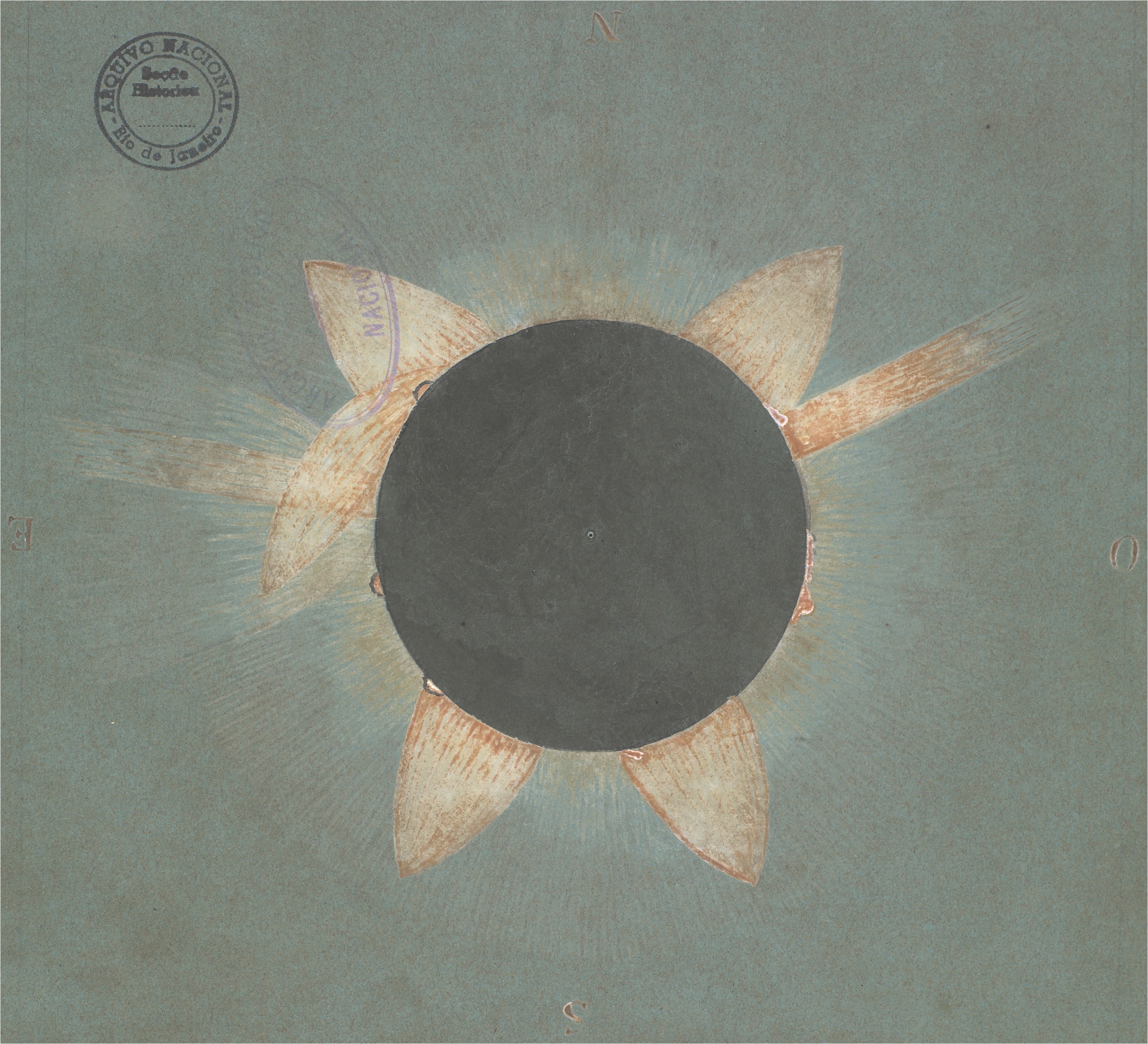Solar Eclipse Of September 7, 1858 on:
[Wikipedia]
[Google]
[Amazon]
A total

NASA graphic
*
Googlemap
*
NASA Besselian elements
by Lieut. J. M. Gillis, Published by the Smithsonian Institution, Washington, Smithsonian Contributions to Knowledge, vol. 11, April 1859 * {{Commons category, Solar eclipse of 1858 September 7 1858 09 07 1858 in science 1858 09 07 September 1858 events
solar eclipse
A solar eclipse occurs when the Moon passes between Earth and the Sun, thereby obscuring the view of the Sun from a small part of the Earth, totally or partially. Such an alignment occurs during an eclipse season, approximately every six month ...
occurred on September 7, 1858. A solar eclipse
A solar eclipse occurs when the Moon passes between Earth and the Sun, thereby obscuring the view of the Sun from a small part of the Earth, totally or partially. Such an alignment occurs during an eclipse season, approximately every six month ...
occurs when the Moon
The Moon is Earth's only natural satellite. It is the fifth largest satellite in the Solar System and the largest and most massive relative to its parent planet, with a diameter about one-quarter that of Earth (comparable to the width of ...
passes between Earth
Earth is the third planet from the Sun and the only astronomical object known to harbor life. While large volumes of water can be found throughout the Solar System, only Earth sustains liquid surface water. About 71% of Earth's surfa ...
and the Sun
The Sun is the star at the center of the Solar System. It is a nearly perfect ball of hot plasma, heated to incandescence by nuclear fusion reactions in its core. The Sun radiates this energy mainly as light, ultraviolet, and infrared radi ...
, thereby totally or partly obscuring the image of the Sun for a viewer on Earth. A total solar eclipse occurs when the Moon's apparent diameter
The angular diameter, angular size, apparent diameter, or apparent size is an angular distance describing how large a sphere or circle appears from a given point of view. In the vision sciences, it is called the visual angle, and in optics, it is ...
is larger than the Sun's, blocking all direct sunlight, turning day into darkness. Totality occurs in a narrow path across Earth's surface, with the partial solar eclipse visible over a surrounding region thousands of kilometres wide.
It was visible across South America
South America is a continent entirely in the Western Hemisphere and mostly in the Southern Hemisphere, with a relatively small portion in the Northern Hemisphere at the northern tip of the continent. It can also be described as the southe ...
.
Observations

Emmanuel Liais
Emmanuel Liais (15 February 1826–5 March 1900) was a French astronomer, botanist and explorer who spent many years in Brazil.
He was born in Cherbourg, the son of a wealthy family in the shipbuilding industry.
He was an amateur scienti ...
from Brazil
Brazil ( pt, Brasil; ), officially the Federative Republic of Brazil (Portuguese: ), is the largest country in both South America and Latin America. At and with over 217 million people, Brazil is the world's fifth-largest country by area ...
Related eclipses
Saros series 142
Notes
References
NASA graphic
*
Googlemap
*
NASA Besselian elements
by Lieut. J. M. Gillis, Published by the Smithsonian Institution, Washington, Smithsonian Contributions to Knowledge, vol. 11, April 1859 * {{Commons category, Solar eclipse of 1858 September 7 1858 09 07 1858 in science 1858 09 07 September 1858 events